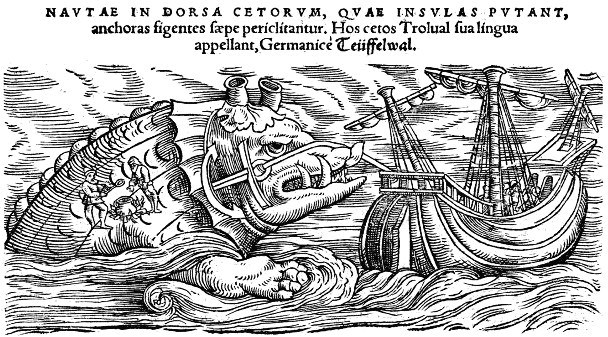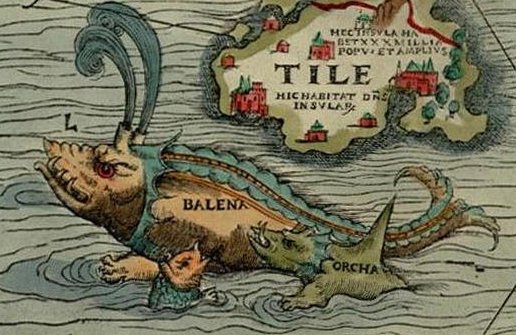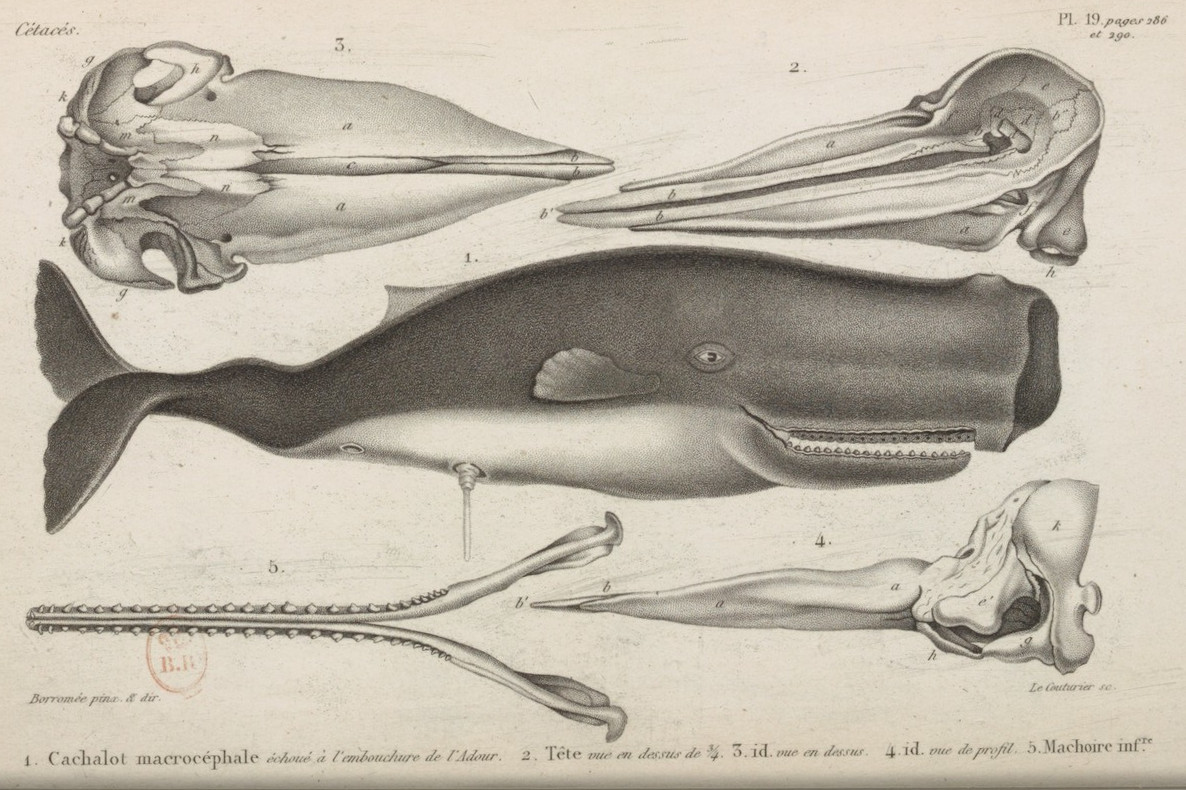Monstrous Ideas
A commentary on chapter 55 of Moby-Dick These two commentaries on Moby-Dick were originally written for an annotated edition of the book organized by users from 4chan’s /lit/ board and published in 2021.
“The erroneous, “monstrous” pictures are of whales in ancient superstition, the sea-monster and dragon-whale fantasies of the Old Masters, Old Testament illustrators, and adherents of pagan myth. … Their origins are intellectual. They are monstrous ideas; they are the myths that Melville will supersede; they are the books of sanctimonious theory and a priori ratiocination that the Book of Nature will supplant.”
Frank’s book is pretty good, not only does he provide a neat analysis of chapters 55-57, but the book reprints nearly every drawing, engraving, painting, and sculpture Melville references by name. Check it out, there’s a copy up on archive.org. As Frank says, Melville’s purpose in these three chapters is to comment on his predecessors’ attempts at depicting the whale, proceeding in order from the most artificial to the most naturalistic. He begins with artists who most likely never set eyes on a living whale, moves on to scientific illustrators who might have gone on a single whaling voyage as part of their research, and ends with scrimshaw carvings made by sailors and south sea islanders who have spent their entire lives living alongside whales.

Since Melville is deliberately trying to take the piss out of his predecessors in this chapter, trying to criticize him for making factual errors would be missing the point. His facetious “swaggering sailor man” personality comes across loud and clear here. You get the sense that coming to him with criticism like “um, actually the carvings at Elephanta don’t include a statue of Matsya” or “well, Beale’s commentary on Desmarest compares his picture to a Chinese drawing, but Desmarest himself never mentions the Chinese – you’d know this if you could read French” would be met with mocking laughter, or a kick in the ribs if you were too persistent. Melville writes his criticism of natural illustration and natural science in the voice of an ordinary sailor, partly because it’s funny, and partly because sailors and other savages understand nature better than artists and scientists do.

That said, most of the pictures Melville mentions in this chapter aren’t that objectionable. The fantastical sea-serpents are at least kind of cute, with their grumpy expressions, frilled collars, and Shrek-like ears/horns/blowholes that spout water in all directions. The scientific illustrators can be forgiven for inaccurately depicting models who were in the process of rotting away. Harris seems to have solved this problem by depicting his whales partially submerged, with only their humped backs showing about the waterline. Sibbald’s illustrations are bloated and misshapen, but capture the form of the whale fairly well and aren’t that offensive. Colnett’s sketch is almost perfect, aside from the scale. Only Cuvier’s whale – whose smug grin and erect phallus (probably) grace the cover of this present volume When I wrote this there were still several competing designs for the cover of the annotated /lit/ Moby-Dick. Most posters favored the one using Cuvier's drawing, which ended up winning in the end. – is as ugly as Melville makes it out to be.

The snout is misshapen, the mouth and flippers are in the wrong place, the tail looks like its been twisted 360 degrees, and the whale is stuck in an unnatural and static pose, neither dead nor alive. It’s possible the artist deliberately shortened the animal’s length in order to fit it onto the paper. Cuvier’s whale lacks the playfulness and grandeur of his predecessors while also failing to be anatomically accurate. As a product of the “Age of Reason,” its half-baked mixture of tradition and rationality is a perfect example of the kind of “monstrous ideas” proto-modernist Melville was rebelling against when he wrote Moby-Dick. For him, nature can’t be anatomized or reconstructed from individual fragments like whalebones, and to project logical ideas about what a whale should be onto a skull or corpse is blasphemy.